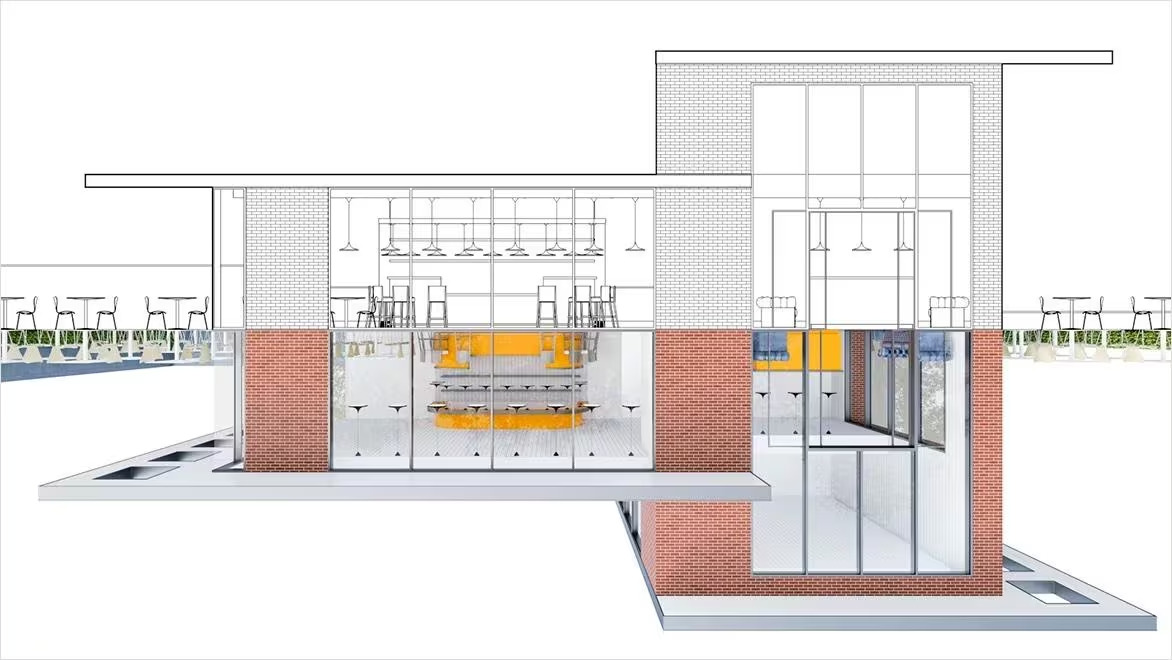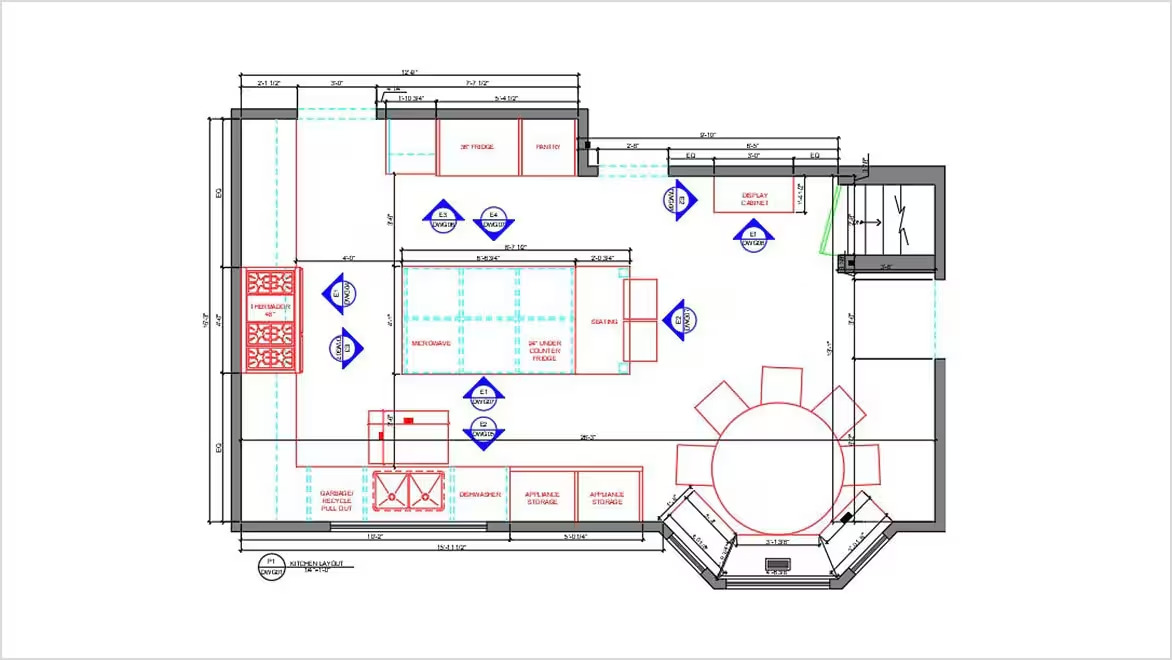- Home
- Articles
- Architectural Portfolio
- Architectral Presentation
- Inspirational Stories
- Architecture News
- Visualization
- BIM Industry
- Facade Design
- Parametric Design
- Career
- Landscape Architecture
- Construction
- Artificial Intelligence
- Sketching
- Design Softwares
- Diagrams
- Writing
- Architectural Tips
- Sustainability
- Courses
- Concept
- Technology
- History & Heritage
- Future of Architecture
- Guides & How-To
- Art & Culture
- Projects
- Interior Design
- Competitions
- Jobs
- Store
- Tools
- More
- Home
- Articles
- Architectural Portfolio
- Architectral Presentation
- Inspirational Stories
- Architecture News
- Visualization
- BIM Industry
- Facade Design
- Parametric Design
- Career
- Landscape Architecture
- Construction
- Artificial Intelligence
- Sketching
- Design Softwares
- Diagrams
- Writing
- Architectural Tips
- Sustainability
- Courses
- Concept
- Technology
- History & Heritage
- Future of Architecture
- Guides & How-To
- Art & Culture
- Projects
- Interior Design
- Competitions
- Jobs
- Store
- Tools
- More
Understanding the Impact of BIM on the Construction Industry: Revolutionizing Building Projects
Discover how Building Information Modeling (BIM) is revolutionizing the construction industry by enhancing collaboration, efficiency, and sustainability. Learn about BIM's features, benefits, challenges, and global adoption trends, along with real-world case studies showcasing its transformative impact on planning, design, and execution for smarter, sustainable projects.

The construction industry is constantly evolving, and one of the most transformative advancements in recent years is Building Information Modeling (BIM). It’s not just a tool; it’s a game-changer that’s reshaping how we plan, design, and execute projects. With its ability to streamline workflows and improve collaboration, BIM is revolutionizing the way we approach construction.
As we face increasing demands for efficiency, sustainability, and innovation, understanding BIM’s impact has never been more crucial. From reducing costly errors to enhancing project visualization, BIM empowers us to deliver smarter, more efficient solutions. It’s clear that this technology isn’t just a trend—it’s the future of construction.
Let’s explore how BIM is driving change, the benefits it brings, and why it’s become a cornerstone of modern construction practices.

Table of Contents
ToggleWhat Is BIM?
Building Information Modeling (BIM) represents a digital approach to planning, designing, and managing construction projects. It integrates data and technology to create comprehensive models that enhance accuracy and collaboration.

Definition And Key Features
BIM is a process supported by software tools that produce and manage digital representations of physical and functional characteristics of construction entities. These models are multi-dimensional, integrating 3D visualization with scheduling (4D), cost estimation (5D), and operational data (6D).
Key features include real-time data updates, enhanced visualization, and improved coordination. For example, design adjustments in BIM tools automatically update related components, reducing inconsistencies. Centralized data repositories allow stakeholders to access accurate, synchronized information throughout the project lifecycle.
Evolution Of BIM In The Construction Industry
BIM’s evolution spans decades, beginning as basic CAD systems in the 1970s and evolving into dynamic systems capable of integrating multiple project dimensions. Widespread adoption gained momentum in the 2000s, driven by advancements in software capabilities.
Government mandates and industry demand for sustainable practices accelerated its growth. For instance, countries like the UK and Singapore require BIM for public projects to improve efficiency and accountability. Over the years, BIM has transitioned from optional innovation to a standard tool for modern construction practices.
Benefits Of BIM In The Construction Industry
BIM significantly enhances construction project outcomes by enabling better collaboration, more accurate designs, and substantial cost and time savings. Its adoption facilitates streamlined workflows and fosters innovative solutions in complex projects.

Improved Collaboration And Communication
BIM fosters seamless collaboration by centralizing project data in a shared digital environment. This approach allows all stakeholders, including architects, engineers, and contractors, to access updated information simultaneously. For instance, project teams can visualize 3D models to identify potential conflicts early. This transparency minimizes misunderstandings, reduces rework, and ensures alignment across disciplines.
Enhanced Design Accuracy And Efficiency
BIM improves design precision through its ability to generate multi-dimensional models that integrate geometry, spatial relationships, and performance metrics. These models ensure designs align with project specifications while identifying potential issues before construction begins. For example, BIM tools like clash detection help prevent structural and mechanical system overlaps, leading to higher design efficiency. This reduces errors and supports sustainable and innovative construction practices.
Cost And Time Savings
BIM reduces project costs and timelines by optimizing resource allocation and streamlining processes. Automated scheduling (4D) and cost estimation (5D) within BIM systems ensure accurate project planning and budgeting. For example, real-time updates in BIM models allow teams to adjust designs without extensive on-site changes. By minimizing delays and material waste, BIM ultimately enhances project profitability and sustainability.
Challenges Of Implementing BIM
Adopting Building Information Modeling (BIM) in the construction industry presents several significant challenges despite its benefits. These challenges often stem from financial, cultural, and technical factors that impact the implementation process.

High Initial Investment And Training Costs
BIM requires substantial upfront investment in software, hardware, and training. Advanced software licenses and high-performance computers capable of running BIM applications often strain budgets, especially for small- and medium-sized firms. Training employees to use BIM systems effectively incurs time and cost, as the learning curve can be steep for users unfamiliar with digital workflows. Companies also need to allocate resources for continuous education to stay updated on evolving BIM tools and standards.
Resistance To Change Among Professionals
Professionals accustomed to traditional construction methods often exhibit resistance to adopting BIM. This reluctance usually stems from hesitancy to modify established workflows, skepticism about the tangible benefits, or concerns over job displacement due to automation. Experienced industry veterans may find it challenging to transition from manual or 2D drafting techniques to multi-dimensional digital modeling. Achieving widespread cultural acceptance requires clear communication of BIM’s advantages and dedicated support throughout the change process.
Data Management And Security Issues
Utilizing BIM involves creating and sharing vast amounts of detailed project data. Managing this data efficiently is complex, particularly on large projects with multiple stakeholders. Ensuring data accuracy, version control, and seamless integration between systems poses ongoing challenges. Security risks also arise due to the sensitive nature of construction data. Unauthorized access, data breaches, or misuse of shared information can result in project delays and legal liabilities. Robust cybersecurity measures and user access controls are essential to mitigating these risks.
The Future Of BIM In The Construction Industry
The construction industry’s future is increasingly tied to the evolution of Building Information Modeling (BIM). Advancing technologies and expanding global adoption are reshaping how projects are executed and managed.

Trends And Emerging Technologies
Several trends and emerging technologies are shaping the future of BIM. Integrated Artificial Intelligence (AI) systems, for instance, are revolutionizing decision-making by providing predictive analytics for project outcomes. AI integration helps identify risks, streamline workflows, and optimize schedules.
Cloud-based BIM platforms are enhancing collaboration by offering real-time access to shared data, eliminating location-based limitations. These systems allow seamless updates and synchronization between remote teams, resulting in improved accuracy and reduced errors during project delivery.
The Internet of Things (IoT) is playing a key role by connecting physical construction elements to digital platforms. Smart sensors installed within buildings communicate performance data to BIM models, enabling effective facility management post-construction.
Augmented reality (AR) and virtual reality (VR) are redefining stakeholder engagement by visualizing projects in immersive environments. These tools enhance design reviews, identify potential clashes before construction, and improve communication with non-technical stakeholders.
BIM Adoption On A Global Scale
The global adoption of BIM is increasing as governments and organizations recognize its value in transforming construction processes. Countries like the UK and Singapore have mandated BIM use in public projects, driving widespread adoption across industries. In the European Union, initiatives like the EU BIM Task Group promote its integration into public infrastructure projects.
In North America, demand for BIM is rising due to its ability to address key challenges like labor shortages, sustainability requirements, and rising project complexities. Private sector investments in advanced BIM tools are also accelerating adoption.
Asia-Pacific is witnessing rapid BIM adoption, with countries like China and India implementing national BIM policies to improve urban planning and infrastructure development. Increased urbanization and mega-projects in this region further underscore BIM’s importance.
However, adoption rates vary across regions due to differences in technological infrastructure, workforce capabilities, and regulatory mandates. Training programs and knowledge-sharing collaborations are advancing adoption in regions with slower uptake.
Case Studies Highlighting BIM’s Impact
BIM’s transformative effects are best understood through real-world applications, where its integration has led to efficiency, accuracy, and innovation. Several case studies demonstrate how BIM drives success in complex construction projects.

Successful BIM-Integrated Projects
The Mjøsa Tower in Norway, the world’s tallest timber building, exemplifies BIM’s role in sustainable construction. BIM enabled precise planning and coordination of prefabricated timber elements, reducing material waste and ensuring on-schedule completion.
The Sydney Metro project in Australia showcased BIM’s capabilities for large-scale infrastructure projects. Teams used BIM for 4D scheduling and clash detection, ensuring smooth construction of tunnels and stations. This approach saved time, minimized disruptions, and streamlined communication among stakeholders.
In China, the Tianjin Chow Tai Fook Financial Center leveraged BIM for 5D cost modeling to monitor expenses during construction. This process enhanced budgeting accuracy, minimized cost overruns, and provided detailed forecasting, ensuring efficient resource allocation.
Lessons Learned From Industry Leaders
Experienced firms highlight that early BIM adoption in project workflows maximizes its benefits. Properly integrating BIM during the design phase reduces errors and improves multidisciplinary collaboration, as Autodesk documented in its studies on global infrastructure projects.
Continuous training is essential to fully leverage BIM’s potential. Leaders in the UK emphasize upskilling staff to address resistance and improve data management practices. Training fosters a smoother transition from traditional methods, addressing common adoption barriers.
Data consistency and collaboration are critical. The Crossrail project in London underlined the importance of a centralized BIM platform, which allowed real-time data access for different teams, minimizing version control issues and rework.
These examples show how BIM redefines construction industry standards, promoting smarter processes and sustainable practices.
Conclusion
Understanding BIM’s impact on the construction industry involves recognizing its transformative potential to enhance efficiency, collaboration, and sustainability. This digital methodology integrates advanced technology with precise data modeling, enabling us to streamline workflows, minimize errors, and achieve better project outcomes.
BIM enhances collaboration through shared digital platforms, ensuring stakeholders work with consistent, real-time data. Its multi-dimensional modeling capabilities improve design accuracy, resource management, and project visualization, reducing inefficiencies and optimizing decision-making processes. These advantages result in significant time and cost savings.
Despite these benefits, adoption challenges like high initial costs, resistance to change, and data management complexities persist. Overcoming these challenges necessitates investment in training, technology updates, and cybersecurity measures to unlock BIM’s full potential.
Innovations like AI, IoT integration, and AR/VR applications signal BIM’s evolving role in modern construction. As global mandates for BIM adoption increase, we’re witnessing its wider implementation across regional markets, with national policies and public project requirements driving demand.
- 3D modeling in construction
- BIM advantages in construction
- BIM benefits for builders
- BIM construction industry
- BIM for architects
- BIM implementation strategies
- BIM in building projects
- BIM integration in construction
- BIM revolution in construction
- BIM software solutions
- BIM technology in construction
- BIM tools for construction
- Building Information Modeling
- construction industry innovations
- construction project efficiency
- construction project management
- digital construction methods
- impact of BIM
- modern construction techniques
- role of BIM in construction
Submit your architectural projects
Follow these steps for submission your project. Submission FormLatest Posts
BIM in Architecture: What You Need to Know for Smarter Building Design
Discover how Building Information Modeling (BIM) is transforming architecture with intelligent 3D...
The Future of Architecture: How the BIM Industry Is Changing Design and Construction
Explore how Building Information Modeling (BIM) is revolutionizing architecture with enhanced collaboration,...
How the BIM Industry is Transforming Modern Construction Practices for a Better Future
Discover how Building Information Modeling (BIM) is revolutionizing the construction industry by...
The Role of BIM in Revolutionizing Construction Projects: Improving Efficiency and Collaboration
Discover how Building Information Modeling (BIM) is revolutionizing the construction industry by...












Leave a comment